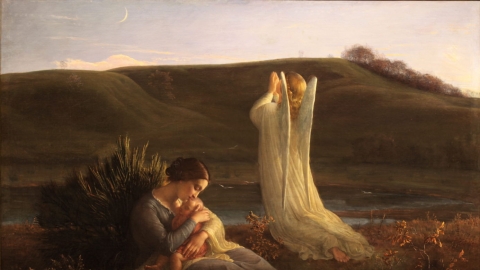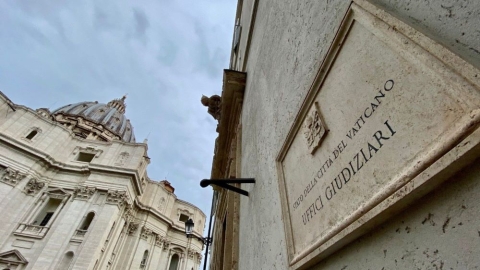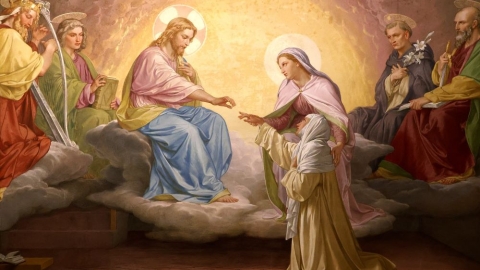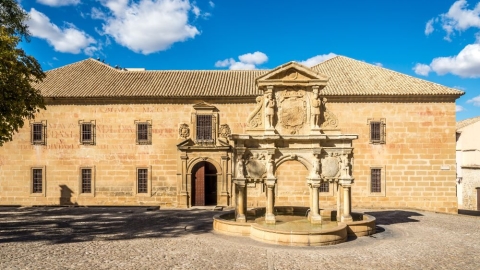Notes From the Pascua Pilgrimage, FL
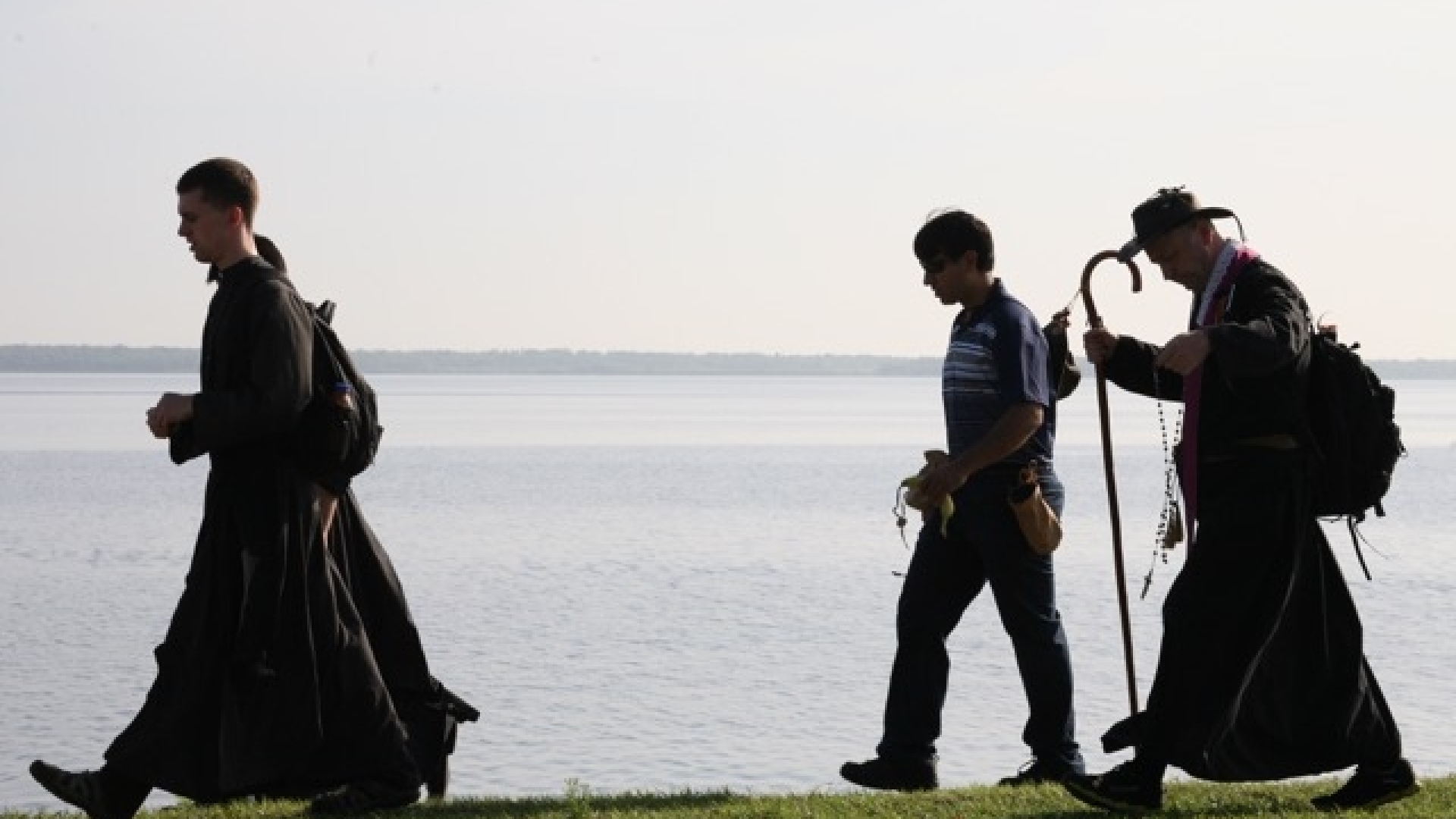
A pilgrim's account of this year's Pascua Pilgrimage in Florida, a 100+ mile, history-tracing trek.
Enjoy the five galleries of pictures.
The first pilgrimage from St Thomas More Catholic Church in Sanford, Florida was inspired by the vision of our beloved pastor, Fr. Marc Vernoy.
Having many fond memories of past pilgrimages he had made, including several to Santiago, understanding the immense benefits attached to a true religious pilgrimage, and being amazed at the forgotten Catholic heritage that the city of St Augustine represented, he encouraged the research and development of what was to become the beautiful six day, 107-mile walking and canoeing adventure now known as the Pascua Florida Pilgrimage.
An Unsung Hero is Finally Honored
Upon studying the 400-year-old Catholic history of Florida, we discovered the virtually unknown martyrdom of Franciscan missionary Fr. Luis Sanchez, an early missionary to the Jojoro Indians in the same area where our pilgrimage now begins. He was one of the very first Europeans to enter and evangelize the area around Lake Monroe and was savagely killed along with two native Indian acolytes and a Aypaja cacique (Indian chief) who fought to defend him. He is one of the patrons we invoke on our journey.
Our route through forests, rivers, and along the sea, retraces the steps that Fr. Sanchez and other missionaries traveled in their early work to convert these long-forgotten native people.
The Trek Begins
The pilgrimage begins early on Tuesday morning with Holy Mass, including a sermon on the true spirit and aims of a traditional Catholic pilgrimage. After Mass comes the blessing of the bags and staffs.
We begin marching with hymns and, of course, the Holy Rosary, which we sing in several different forms throughout the five-day trek. A short two-mile walk brings us to our first canoe launching site on the banks of the St. Johns River, the first highway traveled by the early missionaries.
The pilgrims that participate in this 107-mile, five-day ordeal, need the same courage, faith, and fortitude that was present in these first explorers. Even though they are spared many of the hardships by the dedicated support crews that provide them with canoes, fresh water, hot meals, dry beds, and many other special comforts, they still must have the same virtues and graces to draw on to attempt and complete this adventure.
The day proceeds with an eleven-mile canoe trip to Blue Springs State Park. This beautiful park is located in the same area where a civilization of the Timacuans, a more peaceful tribe, lived. This tribe was widespread across the state and may soon have some of their members included among the list of Catholic martyrs. This park is also the winter home of the endangered Florida Manatee which are usually spotted along the route as are many species of birds, turtles, and the ever present alligators. Lunch at the park is followed by a five-mile hike to our first night's campsite making the total traveled for our first day over twenty miles.
Despite the sore muscles and blisters, the nights spent in the camps are always full of Christian joy and charity. Good company, campfires, song,s and stories make for a very memorable and bonding experience for pilgrims of all ages.
Not All Stillness and Nature
While much of the journey is through many varied types of wild Florida terrain, some is through neighborhoods and along highways which allows the Faith and the dedication of the intrepid Christian spirit to be witnessed by modern crowds who usually can't quite grasp the concepts of self-sacrifice and a beckoning to God that is the reality of a long pilgrimage. They see, along their frequently traveled roads, a cadre of priests, young children carrying high the heavy wooden cross, large banners with forgotten religious symbols they don't comprehend, all of them praying their beads with song and joy. It is a powerful witness to the undying truth and happiness that is the Catholic life.
The last seven miles of this twenty-three mile day take us deep into the Tiger Bay State Forest where we camp deep in the wilderness under a majestic canopy of venerable old live oaks, among bears, raccoons, and bobcats who all keep their respectful distance from the loud intruders to their home. This site is especially challenging for our dedicated support crews who feed us hot meals every day; even this one which is spent with no electricity or running water. They set up, rain or shine, in a different place every night, in forests and along ocean shores, kitchens, dining halls, and chapels. They are the real unsung heroes that make this journey not only possible but also comfortable.
Other nights are spent in beautiful historic locations with incredible histories including the defeat of heretical enemy troops bent on destroying the fledgling Catholic civilization in Florida, and the cannibalism of the early messengers of the King of Spain.
Success...and Te Deum
Every day begins like all the others with pre-dawn Masses said by the dedicated clergy that lead us in our spiritual quest, provide us with the sacraments, and keep us focused on our Christ-centered mission and our ultimate destination, which is the little coquina rock Chapel of Our Lady of La Leche in the Americas, in the oldest city, St Augustine. Here the Holy Mass is said again exactly as it was over four centuries ago. A solemn Te Deum is sung in thanksgiving for many prayers answered, great graces gained, and new perspectives on the Catholic life that is always really a pilgrimage.
